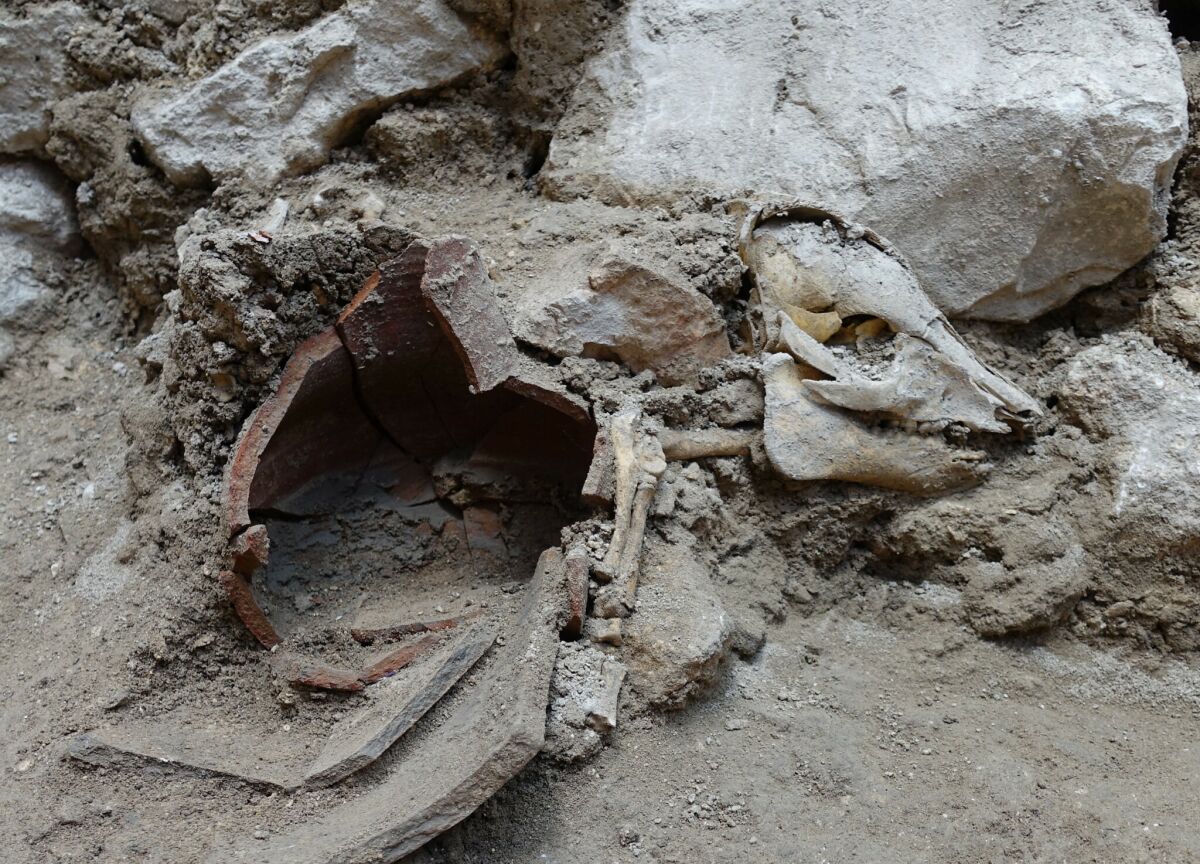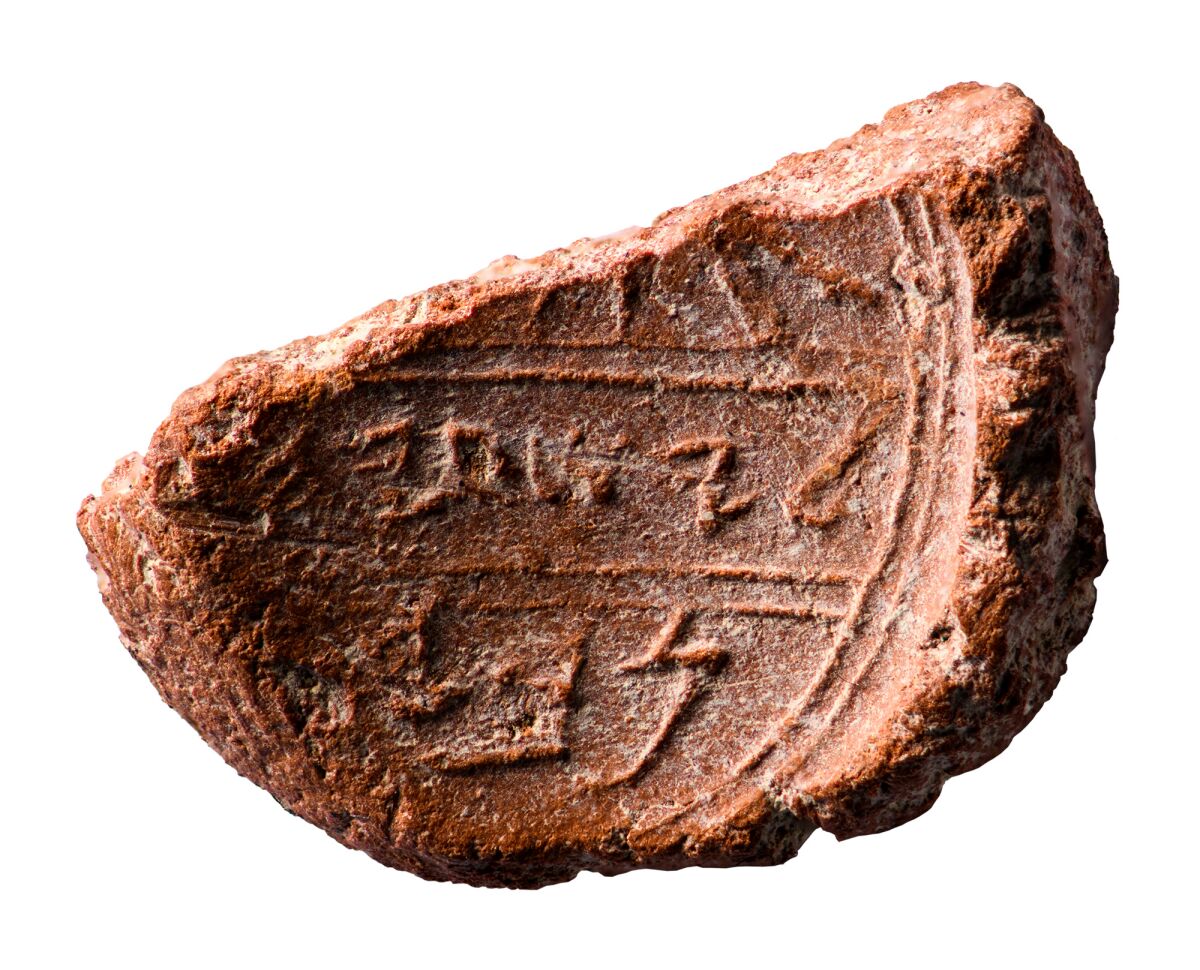Top Discoveries of 2021 Held as Evidence Against the Bible—Except They’re Not
The debate over Bible historicity is nothing new. A century and a half of biblical archaeology has revealed discoveries variously held up as evidence for—or against—the biblical account. Biblical archaeology in 2021 was no different.
Below is a collection of our top discoveries of 2021 that were held up as proof against the Bible—but that only proved just the opposite. (Note: Some of these claims were made by the researchers themselves; others by popular media reporting.)
Consumption of ‘Unclean’ Fish: Evidence Against Existence of Kosher Laws?
New archaeozoological research was released in May showing that Jews during biblical times were consuming non-kosher fish—apparently more frequently, that is, than they ate non-kosher pigs. The study of 56 faunal assemblages from 1550 b.c.e. to 640 c.e. revealed that Iron Age (biblical period) Jews ate non-kosher fish in higher percentages than later, Second Temple Period Jews—13 percent of their total fish remains during this period related to “unclean” fish. This was held up as evidence that the biblical kosher fish laws were not yet in existence, contrary to the biblical assertion in Leviticus 11 and Deuteronomy 14. As one of the researchers commented: “We do not have any evidence that the Judean masses, that your regular everyday Judean you would have met on the street of Jerusalem, prior to the middle of the second century b.c.e. had any knowledge of the Torah and or that he observed the rules of the Torah.” One media report stated: “Only from beginning of the Roman period, in the first century b.c.e., is there clear archaeological evidence that the Jews were eschewing prohibited fish, concludes the study.”
The study made international headlines, drawing a significant amount of derision on social media and in article comments sections:
https://twitter.com/jonbeadle/status/1397776112827224066
You can read more about the substance of the study’s claims in our article below. Suffice it to say here, there was one especially apparent problem: One of the study’s primary researchers had previously published in 2015 a faunal analysis of Dr. Eilat Mazar’s excavation remains dating to the 10th century b.c.e., concluding: “Apparently, Iron iia Israelites in Jerusalem [the early, 10th century b.c.e. united kingdom period of David and Solomon] … did in fact refrain from eating catfish, while the inhabitants of the later buildings above the dumps in Area G did not. The reason for the latter could be connected to a reduced adherence to biblical tradition” (emphasis added throughout). No evidence until the second and first centuries b.c.e.? Where exactly does the contradiction lie?
Read more here: “Were Kosher Fish Laws Really Nonexistent in Biblical Times?”
Jerusalem’s Southeast Wall Left Standing?

The discovery of a 40-meter-long stretch of wall making up Jerusalem’s southeast fortification line at the time of the Babylonian conquest (circa 586 b.c.e.) was announced in July. This length of wall connects on either end to two previously discovered stretches of fortification line, thus completing nearly 200 meters of traceable Iron Age Jerusalem wall. This discovery was highlighted by some in the media as a “potential contradiction to the biblical account,” something that “puts in question [the] narrative of 2 Kings,” citing 2 Kings 25:10: “The entire Chaldean [Babylonian] force that was with the chief of the guard tore down the walls of Jerusalem on every side.” Contradiction?
Hardly: The original Hebrew text doesn’t state that every single wall was torn down all the way to bedrock. The single Hebrew word translated as “every side” means “around” or “round about.” The passage in 2 Kings 25 can be accurately translated simply, “tore down walls around Jerusalem.” And as archaeological excavations in Jerusalem have revealed, this “tearing down” is especially apparent on the western side of the city. Further, while this newly discovered section of wall is “preserved,” it is only up to a comparatively short height of 3 meters—and with a width much greater than that of the height, it was likely originally much higher. Indeed, the sections of the eastern wall vary in preserved height along their length—thus even here, they do indicate a degree of “tearing down”! Should this evidence, then, really call into question the validity of 2 Kings?
Read more here: “Discovered: Biblical Jerusalem’s East Fortification Wall”
Pot-Bound Piglet in Jerusalem: Evidence Against Kosher Laws Pt. 2?

In excavations conducted by the same archaeologists as above, in the same general area of the City of David, a piglet skeleton was discovered in a collapsed eighth-century b.c.e. building (a collapse attributed to “Amos’s earthquake”). The piglet was evidently “destined for the pot,” as there was evidence that this area was used for butchering animals. As such, the discovery fed into the theory that biblical kosher laws must not have existed at the time. A Haaretz report on the discovery announced: “Israeli archaeologists have unearthed the complete skeleton of a piglet in a place and time where you wouldn’t expect to find pork remains: a Jerusalem home dating to the First Temple Period. … At this point we have to wonder how to square the idea that pigs were infrequently but openly raised in Jerusalem with the biblical injunction that: ‘The swine … he is unclean to you. Of their flesh shall ye not eat, and their carcass shall ye not touch; they are unclean to you’ (Leviticus 11:7-8).”
Kudos for quoting the Bible. Still, you would expect to find pork remains in Jerusalem specifically during this middle-eighth century b.c.e.—if you read the Bible. The eighth-century Jerusalemite prophet Isaiah wrote: “I have spread out My hands all the day Unto a rebellious people … That eat swine’s flesh, And broth of abominable things is in their vessels …. Eating swine’s flesh, and the detestable thing, and the mouse” (Isaiah 65:2, 4; 66:17).

The Haaretz article concluded: “[B]iblical prohibitions that are considered signposts of the Jewish faith today were unknown, unheeded or nonexistent back in the First Temple Period.” Unheeded? Bingo—welcome to the story of the entire Bible—one of disobedience.
Read more here: “Piglet Found in First Temple Period Jerusalem”
A Pagan Temple Alongside Solomon’s?
A pagan 10th-century b.c.e. temple, containing the remains of what appears to be a Canaanite idol, was discovered at Tel Motza—a site barely 6 kilometers away from Solomon’s temple. The discovery, reported Haaretz, “confirm[ed] the long-standing suspicion that, in the First Temple Period, starting 3,000 years ago, the religion of the ancient Israelites was very different …. The Israelites apparently didn’t confine their adoration to Yahweh but worshiped a pantheon of gods, including the infamous Baal. … To be clear, this is not the first time that researchers found evidence showing that the Israelite belief system in the First Temple Period was very different from its description in the Bible.” Citing one of the excavation directors, the article described the find as “additional evidence of the fact that the ancient population of Judah was more similar to other neighboring Levantine peoples than a face-value reading of the Bible lets on. They likely shared most of the beliefs and customs of the local Canaanite culture.”
Were you surprised by this discovery? Not if you read your Bible. Did you know that the Bible describes Solomon building pagan temples, including in the vicinity of Jerusalem? (1 Kings 11:1-8). That throughout most of Israel’s and Judah’s history, pagan “high places” existed “on every high hill, and under every leafy tree”? (1 Kings 14:22-23). That the common worship was typically Canaanite in nature? (Psalm 106:35-38). That Jerusalem even became more devoutly rebellious than surrounding pagan cultures? (Ezekiel 5:5-6). That King Manasseh went so far as to put a Canaanite idol inside Solomon’s temple? (2 Kings 21:7; 2 Chronicles 33:4). Should we be “surprised” then (to quote another journalist) to find a pagan temple on the outskirts of Jerusalem, dedicated to a Canaanite deity?

Yet somehow, inexplicably, the excavators published in Biblical Archaeology Review, “What is a temple doing at Tel Motza during this period, when the Bible says the only temple in Judah was in Jerusalem?” And the Daily Mail headlined: “Iron Age Temple Discovered at Tel Motza Near Jerusalem Calls Into Question the Biblical Claim That Solomon’s Temple Was the Only Temple in the Ancient Kingdom of Judah.” Bible says? Biblical claim? Which written work, exactly, is mistaken?
Read more here: “Surprised by a Pagan Temple Discovered Near Solomon’s? Not If You Read the Bible”
Isaiah’s Daughter’s Future Husband’s Illness?

This one constitutes a more roundabout connection, but I would be remiss not to include it. At the end of 2021, the popular website Aeon published a rather critical article of the late stalwart of biblical archaeology, Dr. Eilat Mazar, who died in May. (It’s amazing how some critics cannot allow the dead to rest.) The article led with some thinly veiled criticism of her identification of the Isaiah bulla (and even one of our articles on the subject), and made the following comment four paragraphs in: “According to scripture, Hezekiah and Isaiah not only lived at the same time—the eighth century b.c.e.—but they had a stormy relationship. In one passage, when the ruler was deathly ill, the prophet told him it was a curse sent by God for his failure to marry. Hezekiah promptly recovered when he married Isaiah’s daughter.”
In reading the Bible cover to cover, I’ve yet to find the scripture attesting to Isaiah and Hezekiah’s relationship as “stormy.” Or the prophet telling Hezekiah he was sick because he wasn’t married. Or a scripture saying Hezekiah hadn’t been married. Or that Hezekiah recovered when he married one of Isaiah’s daughters. Or that Hezekiah married one of Isaiah’s daughters at all. Or a scripture even saying that Isaiah had a daughter. (You can fact-check the especially relevant passages for yourself; they are 2 Kings 20, Isaiah 38 and 2 Chronicles 32.) Some of those things may have been true. But “according to scripture”?
That’s another thing about these kinds of articles: They make “claims” about what the Bible says, but where is the scriptural evidence to back them up? If the Bible “claims” it, why not just quote it—or at least cite the scripture? It seems that in the above author’s rush to paint Dr. Mazar in a bad light, the attempt unwittingly—and right from the start of the article—backfired.
‘Fake News’ in the World of Archaeology
These kinds of claims of “proof against” the Bible are made over and again. Yet if you’re someone who cracks open the Bible, most of these claims leave you wondering: Do these people read the Bible? If you’re one who wishes to challenge the Bible on any given topic, go right ahead (in fact, God challenges you: “Prove me now herewith”—Malachi 3:10; King James Version)—but at least figure out what it actually says!
In his summary of the Tel Motza temple discovery and reporting in 2020 (yes, there was another round of this similar reporting surrounding another discovery at Tel Motza in 2020), Let the Stones Speak assistant managing editor Brent Nagtegaal concluded his article “Uncovering the Truth” as follows: “In the case of the Motza temple, have the excavators made a discovery that ‘fundamentally changed the way we understand the religious practices of Judahites’? Maybe it has for them, but not for those who read the Bible.
When reading about a new archaeological discovery, we cannot casually accept the media’s interpretation, especially if it discredits the Bible. Don’t take for granted that the experts are always right. Always check the actual facts, and consider them objectively alongside a thorough reading of the biblical text. When we take this approach, we will often be surprised to learn that many of the discoveries that supposedly “disprove the Bible” actually do the opposite.